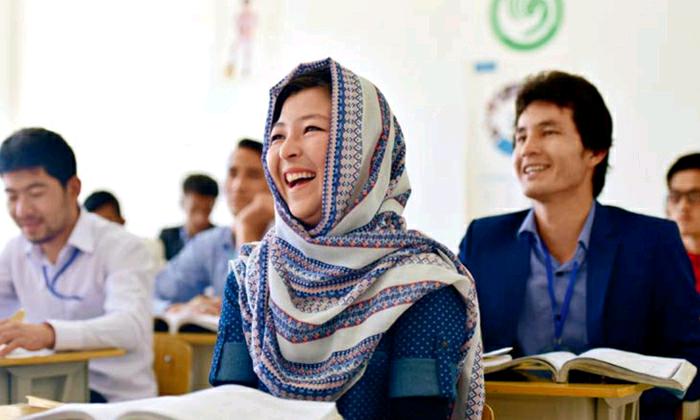Promoting People-to-People Bonds Through Mutual Learning among Civilizations
2017-06-22byXiongChengyu
by+Xiong+Chengyu
“Civilizations have been en- riched and become more colorful through exchange and mutual learning,” said Chinese President Xi Jinping in a 2014 speech at UNESCO Headquarters. “Such exchange and mutual learning serve as important drivers of human progress and global peace and development.” Throughout human history, various factors such as geography, climate, production modes and lifestyles have contributed to the diversity of global cultures. For thousands of years, various cultures have been learning from and communicating with each other, from nomadic and agrarian lifestyles to engineering, printing and the mobile internet.
Over the past 2,000 years, diligent and brave people throughout the Eurasian supercontinent have explored multiple passages to trade and conduct people-to-people exchange with contrasting cultures. In this context, UNESCO places special focus on complicated cultural exchange between China and the West. The organization is working to promote diversity and highlight Eurasias common heritage, which places more pressure on the strenuous work being performed under the Belt and Road Initiative to facilitate cultural heritage preservation and inheritance.
Exchange and mutual learning among civilizations promote openness and inclusiveness, culturally. The Silk Road ran through the four great civilizations, including ancient India, Egypt, Babylon and China. Three major religions, Christianity, Buddhism, and Islam converged on the Silk Road, and myriad ethnic cultures coexisted in peace along the routes. The Nile Valley, the crescent between the Tigris and Euphrates rivers, the Indus River, the Ganges River, the Yangtze River and the Yellow River are all cradles of human civilization. Almost every philosophy, value and culture from both the East and the West have roots in civilizations and religions along the Silk Road.
In 2014, China, Kazakhstan and Kyrgyzstan jointly applied for a 5,000-kilometer stretch of the Silk Road network from central China to Central Asia to be listed as a new World Heritage site known as “Silk Roads: The Changan-Tianshan Corridor Network Routes.” Citing the peaceful coexistence and common prosperity of Chinese culture and various other cultures in the region along the Silk Road, UNESCO has included this area into its Man and the Biosphere Program.
The history of the Silk Road tells the tale of different civilizations developing together with openness and integration, religions moving forward with inclusiveness and dialogue, and peoples enjoying mutual prosperity with communication and exchanges. In the modern era, factors such as cultural clashes, environmental degradation, war, disaster, and the widening gap between the rich and the poor are all hindering the development of human society. To help solve these problems and ease conflict, mutual learning among civilizations and cultural inclusiveness are urgently needed.
In Vision and Actions on Jointly Building the Silk Road Economic Belt and the 21st-Century Maritime Silk Road, issued in 2015, the Chinese government proposed to “advocate tolerance among civilizations, respect the paths and modes of development chosen by different countries and support dialogues among different civilizations.” To realize the goal of communication and mutual learning among civilizations, China has been working through various channels to promote mutual understanding, including multilateral dialogues within international organizations, bilateral talks between governmental agencies, civil dialogues within NGOs, dialogues among different academic groups, and peaceful communication between religions. Effective communication requires openness and inclusiveness, which in turn leads to the peaceful coexistence and mutual prosperity of different cultures.
Exchange and mutual learning among civilizations is also enhanced by unimpeded and complementary economic and trade cooperation. The goods traded along the Silk Road throughout history included not only silk, but tea, porcelain, spices, crafts, gold and silver ware. These commodities contained rich cultural elements. Before the Yuan Dynasty (1271-1368), a heavy volume of culture from the East was introduced to the West in the form of commodities trading. For example, Chinese silk was a highly sought-after commodity among royals and nobles in ancient Rome.
Commodities trading has promoted mutual learning and integration of thought, philosophy, and behavioral patterns between the East and the West. When silk and porcelain was arriving in Europe, the Silk Road was also transporting Europes spices, jewelry, gold and silver wares, as well as some farm products such as nuts, pepper, and carrots, to China. Today, the Belt and Road Initiative conforms to the trends of world multi-polarization, economic globalization, cultural diversification, and informatization. Alongside the process of economic and trade cooperation, China hopes to trailblaze new methods of understanding on exchange and mutual learning among civilizations as well as new trade rules and a new international order.
The Belt and Road Initiative is a thoroughfare of historical heritage, cultural exchanges, economic and trade cooperation and innovation for the future. The common goals of all civilizations include satisfactory material life, rich cultural life and the common well-being of ordinary people. The core of mutually beneficial development lies in both economic and social construction. The innovative road to the future is paved with mutual trust, connectivity, communication, mutual learning, mutual benefits and mutual prosperity. A sound future would give people from all walks of life the opportunity to achieve happiness and live peacefully and contentedly.
China is a country of a long history and a vast territory. For the past few decades, the country has witnessed rapid economic growth. Chinese people are happy to welcome countries along the Belt and Road aboard the “express train” of Chinas development to create a closely inter-related and peaceful world, together. Chinas goal is to construct a new social management structure based on people-to-people bonds and create a more prosperous and harmonious world.